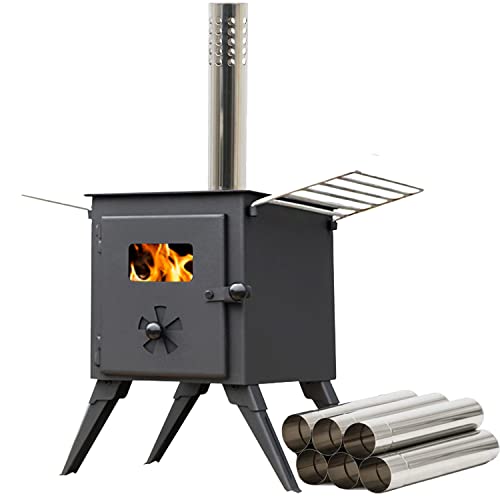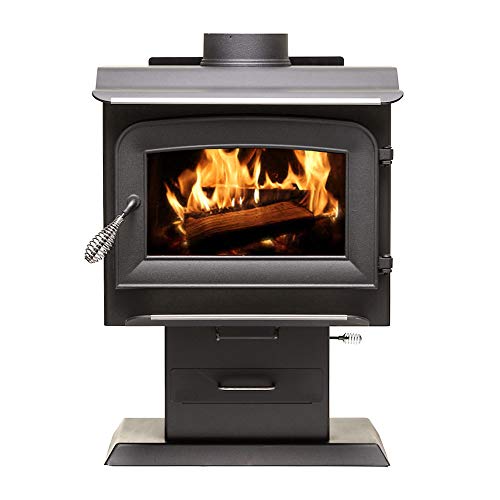There Is No Doubt That You Require Wood Burning Fire
페이지 정보

본문
 The Dangers of a Wood Burning Fire
The Dangers of a Wood Burning FireA wood-burning fire can be a relaxing and cozy experience. However, it can produce harmful combustion products. It is important to learn about how wood burns and how to use your fireplace.
 Choose the seasoned or kiln-dried logs. Logs that are seasoned are less moist and be more hot than unseasoned logs.
Choose the seasoned or kiln-dried logs. Logs that are seasoned are less moist and be more hot than unseasoned logs.Burning Time
The burning of wood is an efficient and traditional method of heating. The fire can release indoor and outdoor pollutants which are harmful to the human body. Skillful use of a well-designed fireplace can help reduce the negative impacts of burning wood.
The amount of time a wood fire lasts is determined by how hot it is. The temperature of the wood fire will affect the amount of smoke released and the amount of carbon monoxide released. Carbon monoxide can make it difficult for occupants to get out of a burning structure if the levels are too high. It is important to keep the temperature of the fire at a lower level the fire to avoid this.
During the first stage of a wood fire, volatile gases such as methane and methanol are released from cellulose of the wood stove online. These gases are non-combustible or combustible depending on the moisture content and the pyrolysis temperature of the sample. The temperature of pyrolysis can rise to 325 degrees Celsius. At this point cellulose starts to break down, creating tar and coal. This process is known as wood pyrolysis.
Burning wood releases other toxic combustion products like dioxins and polyaromatic hydrocarbons and PAHs. PAHs are known to cause cancer and other ailments in humans and animals. They also have the potential to cause soil and water contamination. To reduce the harmful effects of PAHs wood must be burned in a properly ventilated space.
A wood stove that has an extended burn capacity can keep visible flames while using a minimal amount of fuel. This method of burning involves layering the wood with lighter kindling and larger logs to keep the fire from burning too fast. This technique can be used for a fire to produce high temperatures, whether overnight or while you're at work.
The length of the fire is determined by many factors, such as the moisture content of the wood. Dry wood burns more quickly than damp wood. The surface's absorptivity affects the duration of its burning. Simms [59] observed that the required heat flux to ignite mahogany and oak samples was significantly lower on coated surfaces than without them.
Temperature
The temperature of a fire is incredibly important. It affects the speed at which it burns, as well as the heat it produces. It also influences the risk in the event of a person being burned. It also influences the amount of smoke produced. Smoke can irritate eyes and throats, so it is best to avoid breathing it into.
When wood burns it generates lots of heat and it can reach very high temperatures. The temperature of the fire can be affected by the type of wood used and moisture content. Wet wood, like is likely to burn at a lower temperature than dry wood. This is because wet wood will absorb more water, and therefore less heat. It is essential to burn dry wood. It is also important to make sure that the wood has been seasoned before burning.
When the wood reaches its peak temperature of combustion it will release a lot of heat and ash. The amount of ash released depends on the type of wood and how hot. Some woods, such as oak and larch, produce very little ash when they burn. Others, such as birch, can produce an enormous amount of ash.
As the wood burns it will go through a three-stage pyrolysis process. This process begins with a chemical reaction that transforms the organic substances within the wood into carbon dioxide and methane. The resultant gases are taken up by the air around them. When the wood is heated, the gases will rise and ignite the surface of the wood which will create the appearance of a flame, which heats it up until it combusts.
The temperature of a wood burning fire can be very high, and can cause damage to surfaces if it comes into contact with them. Avoid touching the fire with bare hands as it could cause serious burns. You can lessen the risk of burning yourself by wearing gloves and working in a ventilated area. Masks are recommended when working around fires that burn wood to prevent breathing in smoke.
Smoke
Smoke from wood burning fires is released, which is a mixture of gases and fine particles (also called particulate matter (PM) which are harmful air pollutants. The smoke from wood combustion may contain toxic organic compounds such as benzene, formaldehyde and polycyclic aromatic hydrocarbons, as well as mineral particles like calcium, potassium, and magnesium. These particles can trigger a variety of health problems that include cancer and respiratory diseases. When people inhale smoke from wood and inhale carbon monoxide (CO), an odorless and colorless gas that can cause fatal poisoning in Small wood burning stove for sale amounts.
The smoke that comes from wood fires is mostly due to volatile organic compounds (hydrocarbons) evaporating from the burning material. The smoke also contains some water vapor, which is the byproducts of incomplete combustion (such as creosote), and a small percentage of unburned Ash.
When deciding on the type of wood that you want to burn in your woodstove or fireplace it is recommended to select firewood that has been seasoned. Split logs, which were stored away from the elements and allowed to dry for a period of time until they reach an average moisture content of 20 to 25 percent, burn less and produce less creosote. A log's knock on both sides is an excellent method to determine the amount of moisture. Damp wood will have a dull sound, while the logs that are seasoned will produce an intense sound.
The heat produced by wood fire draws air around it and the smoke and other combustion byproducts are pushed out through the chimney. If the ventilation system in the house is not adequate and the chimney is not properly ventilated, it may be unable draw enough air, and create an back draft. This could cause the byproducts from the fire to accumulate within the home. This could result in a buildup in dangerous carbon monoxide as well as flammable creosote and cinders.
Smoke from wood burner near me-burning fires can be particularly hazardous to people over the age of 65, those with heart or lung diseases, children, and outdoor avids. Smoke from wildfires could affect the health of older adults, those with heart or lung disease, small Wood burning stoves children and wood burning stove outdoor people who are active outdoors.
Safety
There are some precautions you should take when using a fire that is wood-burning to reduce the chance of. You should always make use of an electric fireplace or wood stove screen and keep anything that is flammable at 3 feet from the fire. Smoke and small wood burning stove for sale carbon monoxide detectors should be installed in your home to alert you when dangerous gases are detected. You should never leave a fire unattended as even a small flame could cause an explosive explosion. You should make use of a ash bucket made of metal and a shovel for removing the ashes from your wood stove or fireplace. Keep it away from anything flammable.
Lighting the Fire
To begin a fire, place an even layer of dry and cleft logs on a bed of ash. Then add a layer twigs and kindling on top of the pile. Make sure there's enough space between each piece of wood to allow for air circulation, as this will help keep the fire from dying too quickly. If you need help in getting your fire going, try adding some firelighters to the mix.
It's also recommended to open a door when you are starting your fire, because this will help the fire get the oxygen it needs to burn brightly. This is particularly important for modern homes, which are often tightly insulated and do not have natural draft or ventilation.
When your fire has started to heat up, you can start adding more and larger pieces of wood to it. However, it is important to remember that even seasoned hardwoods like oak and hickory can still release an enormous amount of creosote after burning, so you should avoid burning them as long as you can.
Ideally, you should only use seasoned or kiln dried firewood for burning your fire, as it is less likely to cause creosote accumulation in your chimney system. However, if you need to use fresh or green cut firewood, make sure you do it with a lot of caution because it will produce more smoke and could cause more creosote.
- 이전글What Makes The ADHD In Adults Treatment So Effective? During COVID-19 25.02.05
- 다음글5 Motives Private ADHD Medication Is Actually A Good Thing 25.02.05
댓글목록
등록된 댓글이 없습니다.